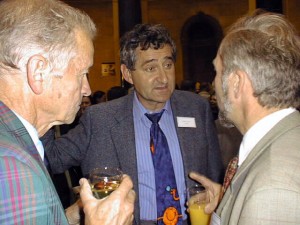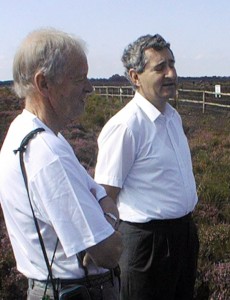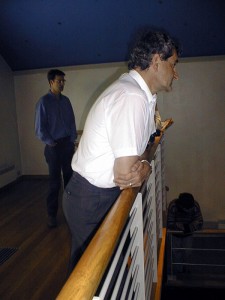Our NewsWARP European coordinator, Francesco Menotti, Professor, Institute of Prehistory and Archaeological Science, Basel University, Switzerland, has sent us this news release on the recent discovery of a 5,000 year old door in a Swiss wetland/wet site:  http://www.redorbit.com/news/science/1935254/archaeologists_unearth_5000yearold_door_in_switzerland/. Francesco reports that “we know that it dates 3063 BC, but not much more details.” We will post more information as we can gather it too.
Yoko-o Site, Oita City, Kyushu Island, Japan–Evidence of Obsidian Trade, including some found in a Basket, covered in a Volcanic Eruption over 7000BP
Professor Akira Matsui provides breaking news about another 7000+ BP site with wood and basketry preserved on Kyushu Island, southern Japan (also see his report on the Higashimyo Wet Site dating to this time period below).  His newly reported site is the Yoko-o Site and was covered by eruptions of volcanic ash during these early time periods. The site is an interesting location for trade exchange, involving obsidian.  An abandoned basket was found full with Himeshiman obsidian which must have been brought to this transport center by boat across the sea. His report is attached here: Yoko-o Site, Oita City, Japan 2 8-26-10
Also Professor Matsui has been invited as an advisor at a wet site excavation in Korea from September 7 to 10th. They are excavating a wetland shell midden dating back to 6000-8000 BP. And another important wet site had been reported near this site. Please see the materials on these web sites:
 http://www.hani.co.kr/arti/culture/religion/61937.html, and http://www.yonhapnews.co.kr/local/2010/08/17/0818000000AKR20100817129600005.HTML
He hopes that Korean archaeologists will have success in their wetland archaeology explorations and join us at WARP. Hopefully we can get an update on these wet sites when Professor Matsui returns.
Professor Barry Raftery, Founding WARP Associate, Passes after Long Illness
We are sorry to report the loss of Professor Barry Raftery, emeritus professor of archaeology at University College Dublin, Ireland. Barry attended WARP conferences in U.S. and Europe and visited WARP Pacific Representative, Professor Akira Matsui’s projects in Japan. He hosted the WARP international conference in Dublin in 1998–certainly one of most memorable experiences for those who could attend, tour the region and the museum featuring his celtic trackway discoveries,  and dance after the banquet to the live music of the band, Altan, arguably Ireland’s biggest name in traditional music (Barry’s child is married to one of the musicians!).
Professor Akira Matsui sent us the news:Â Â “I think you have heard the news that Prof. Barry Raftery’s death. I send a condolence mail to Mrs. Raftery to hear Barry’s death this morning. Please add this news to the News WARP.”
Drs. Byrony and John Coles, Founders of WARP send this message (attached) and that they “heard yesterday that Barry Raftery died peacefully in his sleep, on Sunday night – he had been ill for a long time. We’ve written a short note which we hope can go on the website, and maybe other people will add photos and other memories. I’m sure you have some yourself, from Dublin or earlier conferences.
all for now, best wishes”,
Bryony
Barry visiting at WARP 1998 Reception in Ireland
John Coles and Barry visiting during WARP 1998 fieldtrip in Ireland
Barry discussing his Trackway Museum with WARP 1998 Ireland Delegates
Diorama of Barry working on his Trackway Project in the museum dedicated to this impressive wet site work.
Late Pleistocene butchered Bison antiquus from Ayer Pond, Orcas Island, U.S. Pacific Northwest
We have permission to post an exciting Article in Press concerning recent work on butchered Bison antiquus recovered in a wetland on the Northwest Coast of North America dating to approximately 12,000 BP–nearly 800 C14 years older than the main dates for North American Clovis assemblages. Bone modifications on peat-bog preserved Bison antiquus provide evidence suggestive of Late Pleistocene large game hunting activities in this possible entrance area into the Americas.
Please review PDF of this latest wetland contribution in the U.S. Pacific Northwest:Â Ayer Pond Wetland Extinct Bison Butchering Site–QI Kenady et al in press
Comox Harbour Fish Trap Site, B.C., Canada–a Unique and Complex Tidal Trap Find
Nancy Greene has lead a multi-year mapping and research project at Comox Harbour on the east coast of Vancouver Island, British Columbia, Canada–carefully recording an ancient, distinct, and large intertidal wood stake fish trap complex. The size, shape, numbers and expanse of the trap features are unique for coastal B.C., and possibly for the Northwest Coast.
Nancy presents a well illustrated and laid out PDF of their fish trap complex. Many of the trap features are remarkedly well preserved and display functional attributes. Basketry, a wooden wedge with a cordage collar, and cordage are being stabilized and analyzed at the SPSCC conservation laboratory, and Nancy may have a future report on the analyses of these associated perishable artifacts.
Nancy Greene can be reached at ngreene@shaw.ca if you would like to network with her further on her fish trap recording project in B.C. Canada. See her PDF at: _WARP web report



